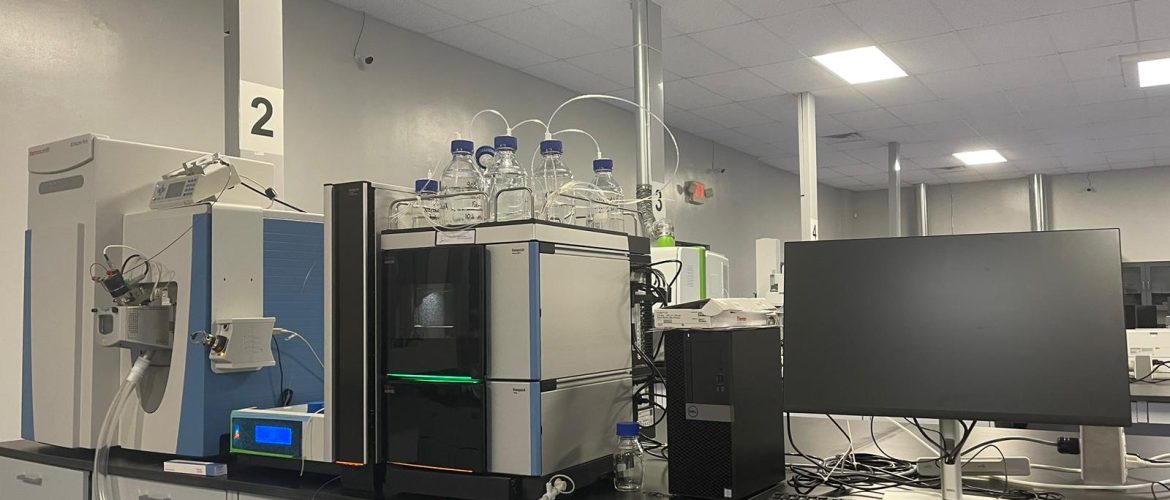EXTRACTABLES AND LEACHABLES – A RISK-BASED APPROACH TO IDENTIFY AND QUANTIFY THE UNKNOWNS USING ORBITRAP LC-MS/MS, GC-MS, AND ICP-MS
It is an undeniable fact that plastic has been woven into the fabric of modern pharmaceutical and biotech manufacturing processes, owing to its affordability, versatility, and functionality. Yet, these benefits are not without their drawbacks. Given that plastic polymers rely on additives to achieve their necessary properties, the migration of these substances into drug products is a common and worrisome issue. Enter the world of Extractables and Leachables (E&L) – a crucial consideration in any drug development pathway.
UNDERSTANDING THE ESSENCE OF E&L
Extractables are compounds that could potentially migrate from drug containers or medical devices into the product, typically under stressed or extreme conditions. Conversely, leachables are compounds that do migrate under normal conditions of use. The challenge with E&L analysis is the unknown nature of these compounds, the necessity for surrogate standards to estimate concentrations, and the need for ever-increasing detection sensitivity.
Regulatory bodies have broadened their scrutiny beyond the drugs themselves to include their packaging and manufacturing processes. In response, pharmaceutical manufacturers now incorporate E&L testing early on in toxicology risk assessments, aiming to quickly and accurately identify and quantify toxic compounds.
So, to examine and identify all possible impurities and toxins that may exist in a drug product, we employ various analytical techniques and perform a range of analytical testing:
• for non-volatile impurity testing: we use liquid chromatography coupled with mass spectrometry (LC-MS) or tandem mass spectrometry (LC-MS/MS)
• for volatiles and semi-volatiles impurity testing: we use gas chromatography coupled with mass spectrometry (GC-MS)
• for elemental impurity (trace metals) testing: we use inductively coupled plasma coupled with either a mass spectrometer or the optical emission spectrometer; ICP-MS or ICP-OES.
UNRAVELING THE CHALLENGES WITH E&L ANALYSIS
The traditional methods for E&L testing have been labor-intensive and time-consuming, which can lead to increased costs, a higher margin of error, and limited reproducibility. Besides, the classification of harmless compounds as toxins based on a safety-first approach can result in needless process modifications, leading to further costs and delays.
Enter the era of advanced extraction, identification, and quantification tools, heralded by a new generation of sophisticated technologies and methodologies. These high-tech solutions are fast changing the landscape of E&L testing, promising quicker results, cost savings, and improved accuracy.
SYNERGY BIOSCIENCE: HARNESSING INNOVATION IN E&L ANALYSIS
Stepping into this evolving landscape, Synergy Bioscience is armed with state-of-the-art technologies, most notably, the Orbitrap LC-MS/MS system. This powerful tool enhances the accuracy and speed of E&L analysis, meeting the need for high precision, sensitivity, and throughput.
The Orbitrap LC-MS/MS, recognized by regulatory bodies as an approved method, supports the entire E&L analysis workflow, from sample extraction to detection, quantification, and analysis. Its prowess lies in its automation, ensuring faster and more accurate results at a lower cost.
Synergy Bioscience also leverages Automated Sample Extraction (ASE) systems, allowing samples to be extracted in just 15 minutes using a mere 10 mL of solvent. This innovation reduces costs, increases laboratory throughput, and frees up valuable analyst time.
NAVIGATING THE FUTURE OF E&L TESTING
With evolving regulatory requirements like the US Pharmacopeia USP 1663 and USP 1664 guidelines, the role of high-precision technologies such as the Orbitrap LC-MS/MS will continue to grow. Alongside this, advancements in automated sample extraction and multi-technology approaches for separation and detection will shape the future of E&L testing.
As Synergy Bioscience continues to harness and invest in these cutting-edge technologies, we are better equipped to tackle the most challenging projects in E&L analysis. Our state-of-the-art laboratory facilities and expert team remain committed to ensuring the highest level of patient safety and product quality.
In summary, the world of E&L analysis is set for a revolution, with modern techniques ensuring drug safety and efficacy, free from the effects of the manufacturing process, packaging, and delivery mechanisms. And leading this revolution is Synergy Bioscience, armed with advanced technologies, innovative processes, and an unyielding commitment to ensuring drug safety.
